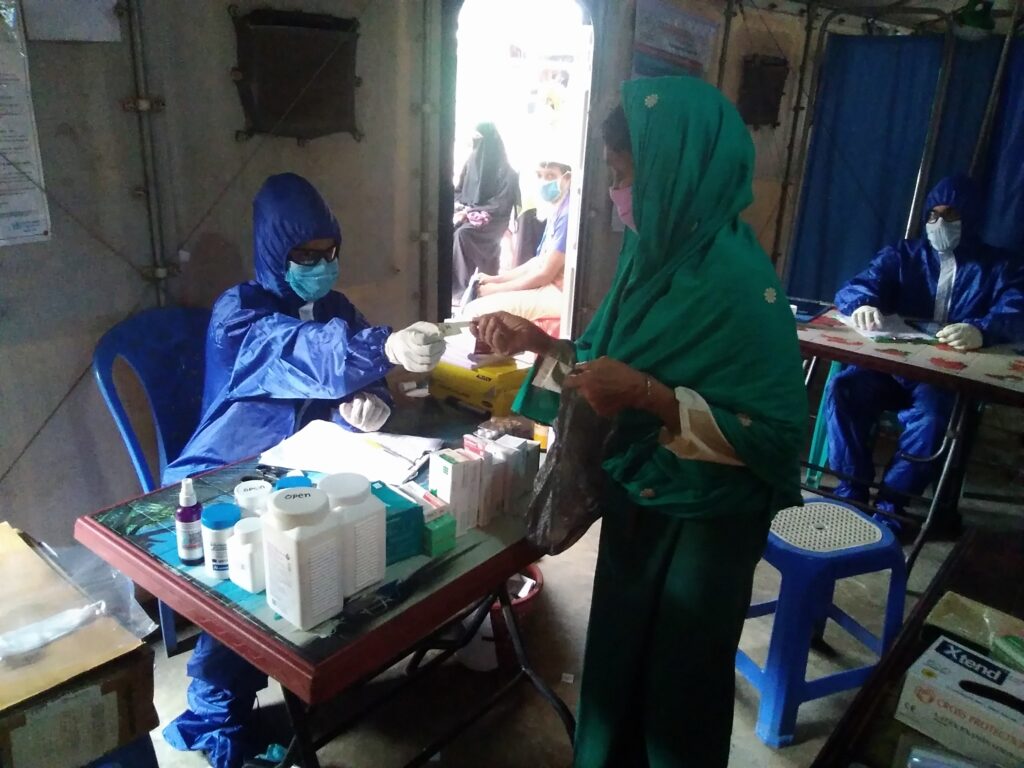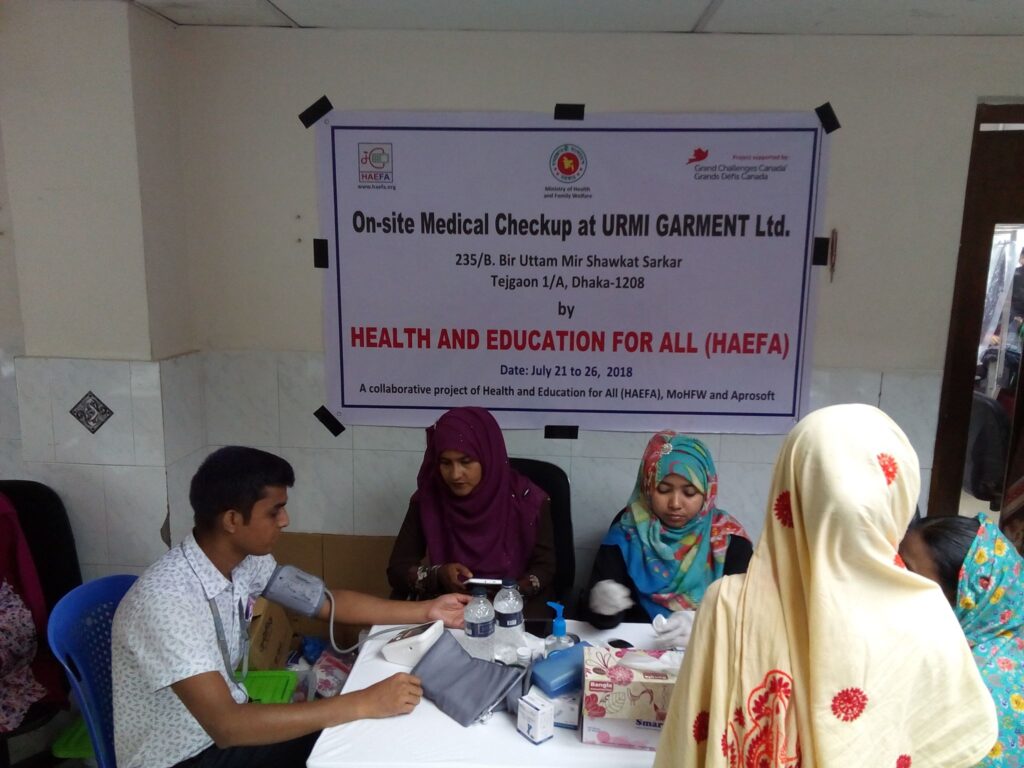

FDMN Project:
In October 2017, during the mass exodus of Rohingya from Myanmar, HAEFA brought its solar-powered EMR system that can operate offline (without internet) to the refugee (FDMN) camps. HAEFA treats 6000 to 7000 patients per month. HAEFA carries out direct treatment of patients as well as referrals for more specific needs such as Tuberculosis treatmentand Severe Acute Malnutrition.
Primary Healthcare Centers:
When the mass exodus of Rohingya from Myanmar occurred in August of 2017, HAEFA already had an efficient method for screening and treating a vulnerable population for acute and chronic infectious diseases as well as NCDs. In the face of the crisis, HAEFA quickly turned its attention to adapt its innovative EMR software system NIROG and bring it to the refugee camps.
Our two 11-member medical teams of physicians and health workers have been running two Medical Centers in Kutupalong (Camp 1W) and Balukhali (Camp 9), Cox’s Bazar, Bangladesh to serve the Rohingya refugees since October 9, 2017. Our team serves an average of 7,000 patients per month, for a total of more than 130,000 patients to date.The first heath centers were comprised of bamboo tents shared with the government’s health centers. Four doctors, six nurses and paramedics, eight health workers, and two IT assistants made up the first members of the team. This project has gradually grown in size and capacity, now employing 11 medical professionals in each camp as well as IT personnel, midwives, and even a night guard. The two camps together treat 250-300 patients a day for six days a week, adding up to between 6,000 and 7,000 patients per month. In addition to treating the Rohingya patients, HAEFA also treats Bangladeshi people from the host communities as they are also an underserved population with little access to quality healthcare. HAEFA keeps the data of the patients from the host community separate from that of the Rohingya refugees. As of May 31st, 2019, HAEFA has treated approximately 130,000 Rohingya patients and members of the host community.
Treatment Protocol:
There are two systems in place for the treatment of HAEFA’s patients: direct treatment and referrals. Patients in need of treatment for cut injuries, bullet injuries, hypertension, diabetes, asthma, malnutrition, fever, cough, or other illnesses are able to be treated right at HAEFA’s health center in the camps. HAEFA developed a treatment protocol for hypertension and diabetes treatment based on various international protocols that were modified for the refugee population. However, due to the relatively small-scale nature of HAEFA’s operations, it is necessary to partner with other healthcare providers in the camps for specific treatments such as TB, preeclamptic toxemia (PET), severe acute malnutrition (SAM), or mental health needs. Those who test positive for TB in HAEFA’s center are referred to BRAC for treatment.
All pregnant women are tested at HAEFA’s center, and those with complications are referred to the UNFPA hospitals run by the Hope Foundation. HAEFA does not have a system for child delivery, so women with both normal and complicated pregnancies are referred to hospitals for delivery. Children who have moderate acute malnutrition (MAM) are treated by HAEFA with vitamins and health and nutrition education given to the parents. Children with SAM are referred to the World Food Programme centers. When HAEFA’s doctors suspect a patient has mental health needs, the patient is referred to a government health center for care. Victims of sexual assault are referred to a women-friendly center run by UNFPA for their needs. With HAEFA’s organized testing and record keeping along with the partnership of various other healthcare organizations, the Rohingya have a comprehensive network of support to gain the treatment that they need.
Readymade Garments factory Project:
Garment factory workers facing long hours and a lack of access to healthcare are supported by HAEFA’s medical teams. Since 2013, HAEFA has provided free health screening and treatment including medicines to more than 30,000 garment factory workers. Major focus areas are: NCD (hypertension, diabetes, COPD/asthma), tuberculosis, malnutrition including anemia, and pregnancy, safe delivery, and management of complications of pregnancy such as gestational diabetes, PET including gestational hypertension, albuminuria.
In 2018, HAEFA introduced, for the first time in Bangladesh, one-stop cervical cancer screening, thermocogulation and referral for LEEP/biopsy using mobile colposcopy and thermocoagulators.
HAEFA developed a four-station model which records medical data to a HIPAA compliant, encrypted database server that can be accessed by authorized medical professionals anywhere in Bangladesh. The EMR system, NIROG, enables follow up care using bar coded patient ID cards. HAEFA has screened more than 30,000 garment factory workers since 2013.HAEFA received ‘Stars in Global Health Award’ from the Grand Challenges Canada in 2018-2019 to serve more than 10,000 RMG workers in Bangladesh.
